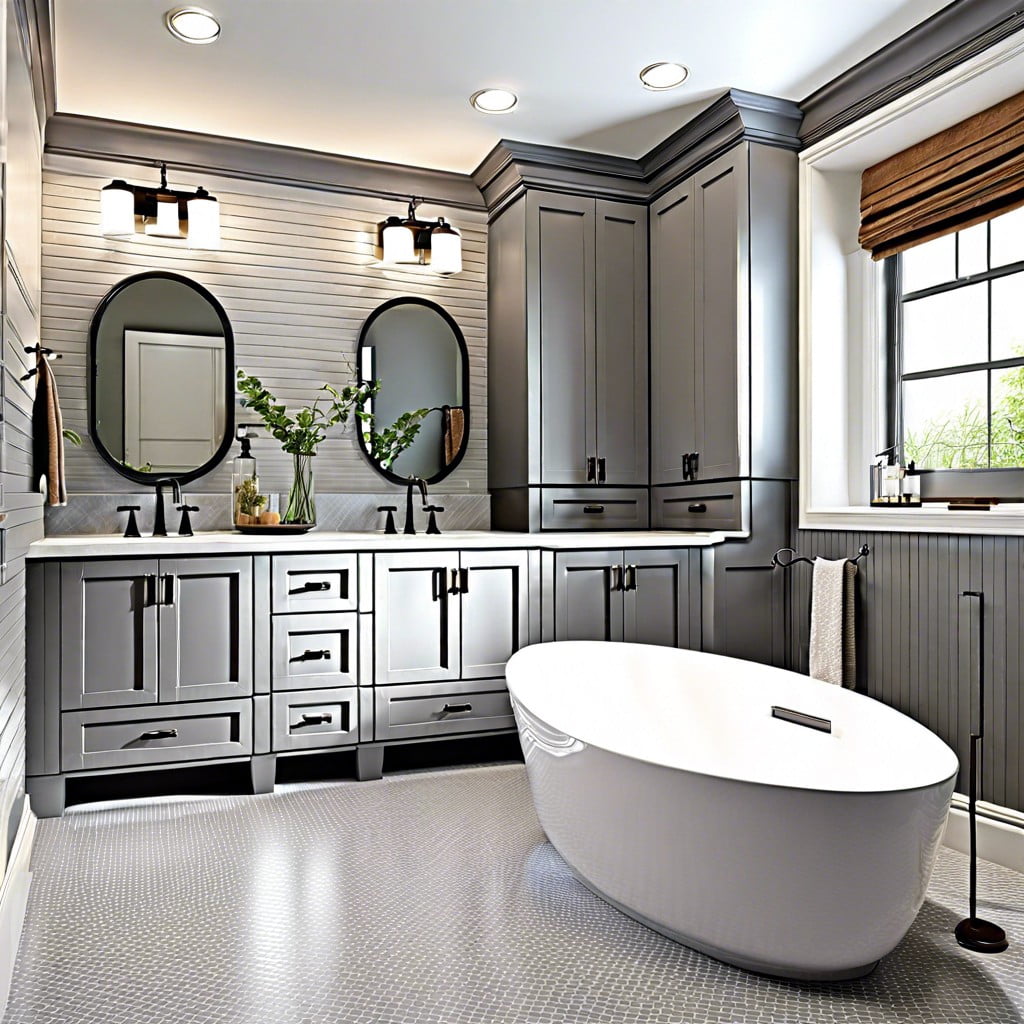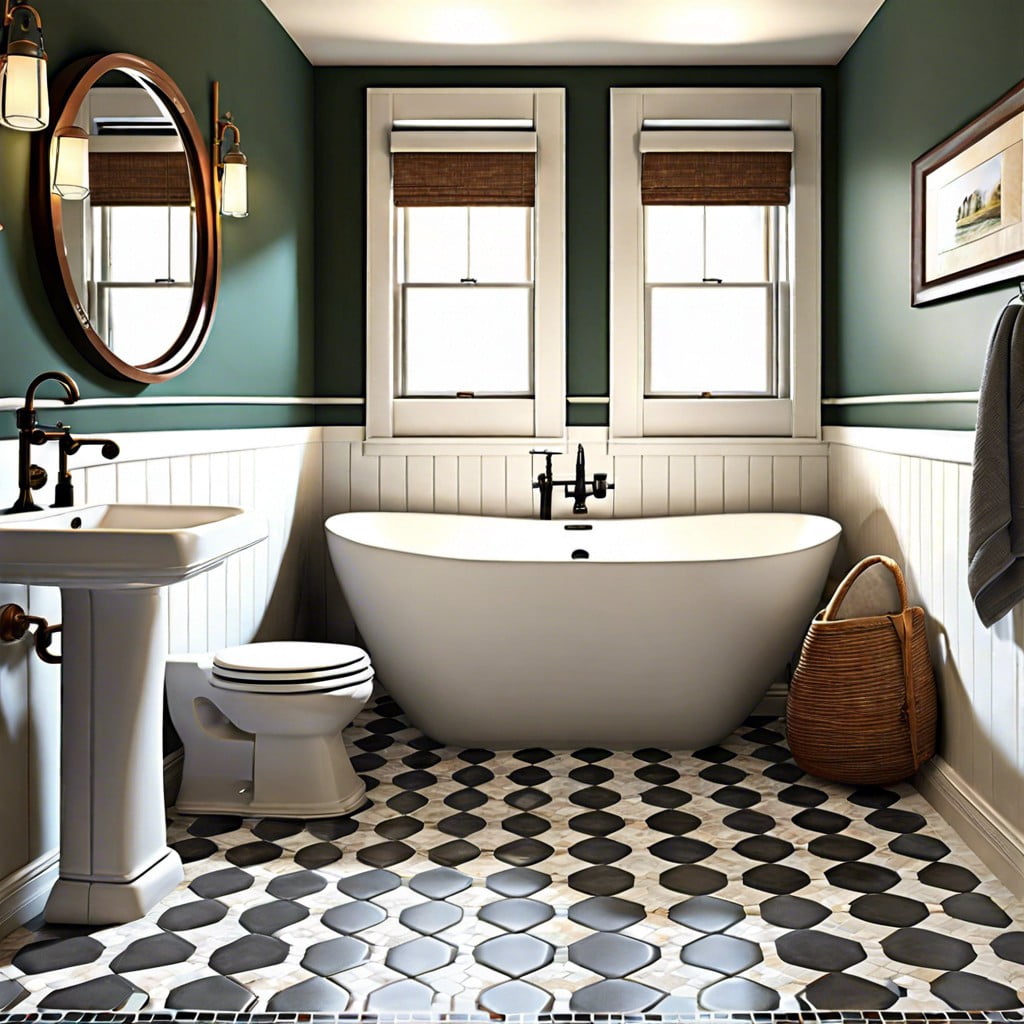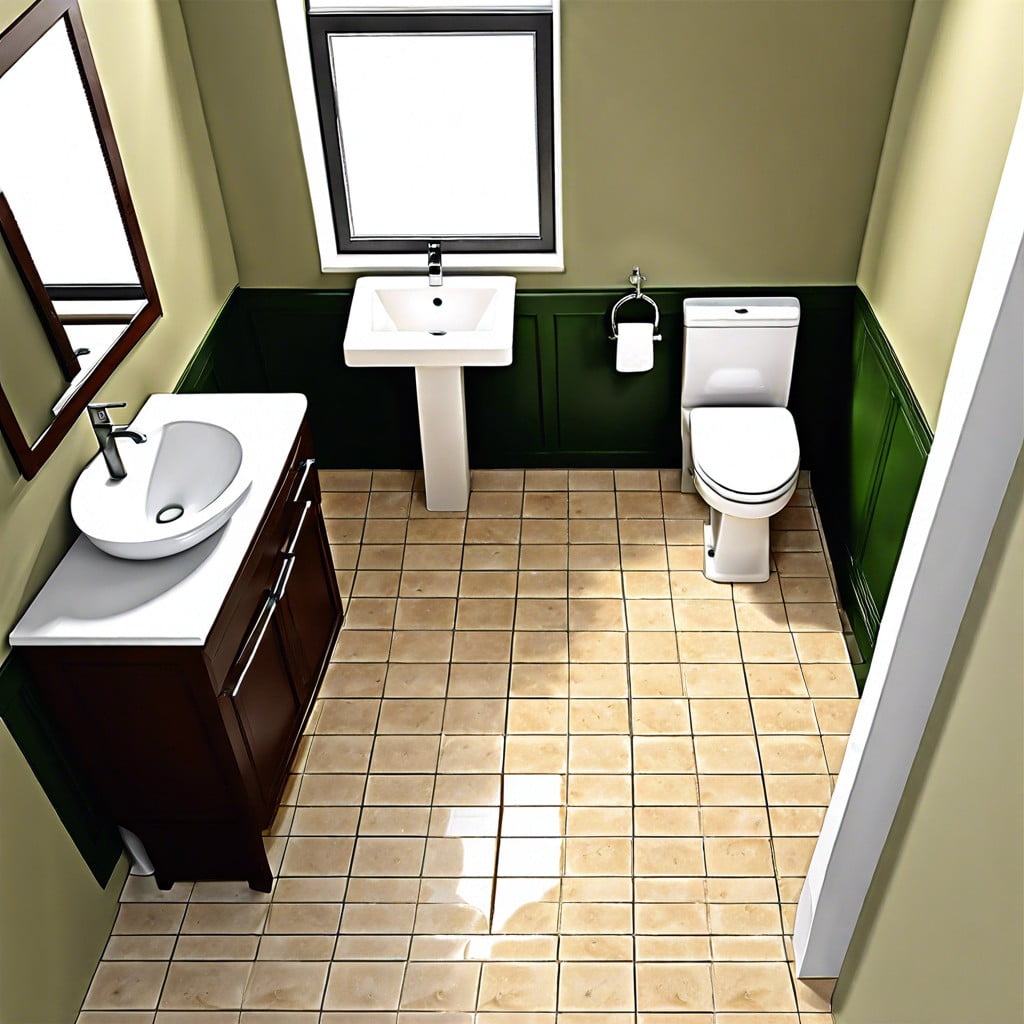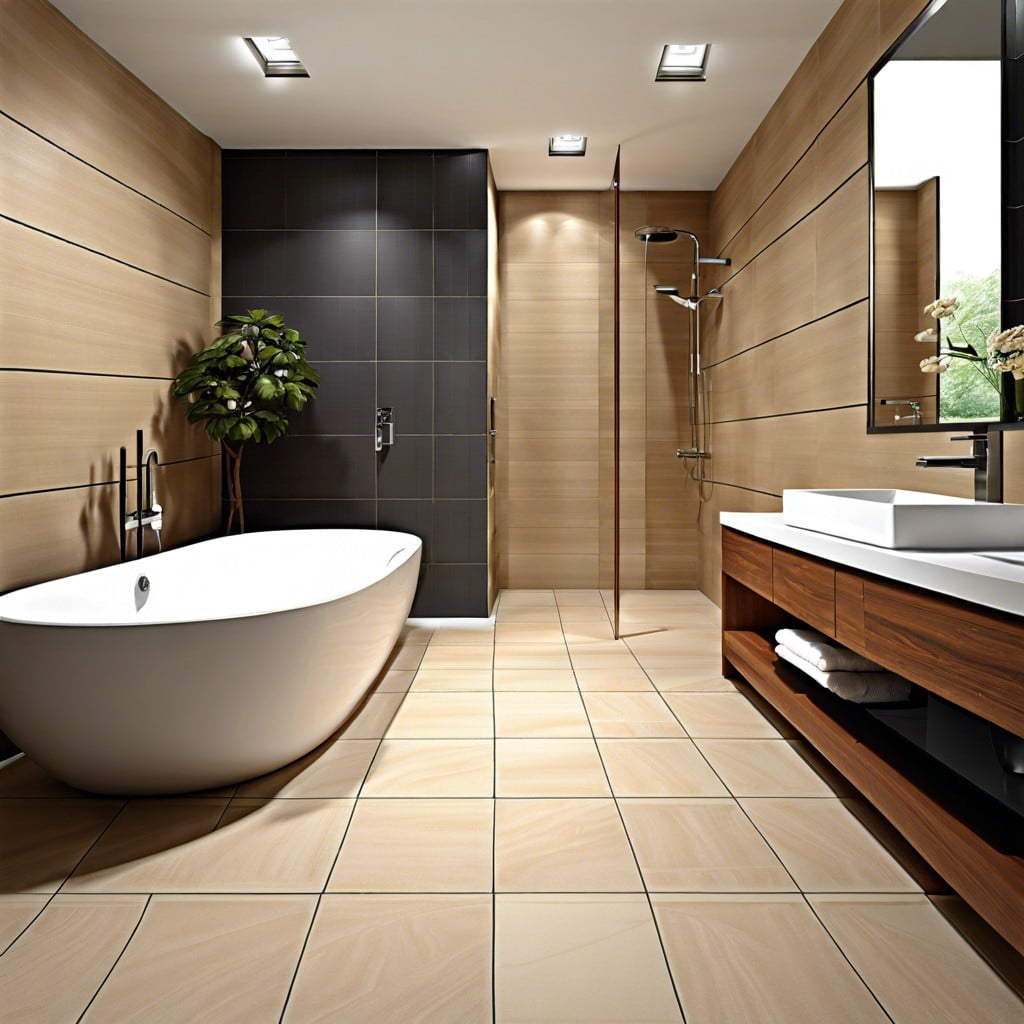Last updated on
Discover practical considerations and style tips for selecting the ideal bathroom vanity with sink to enhance your space and meet your needs.
Key takeaways:
- Size: Choose a vanity that fits your space and allows for door openings and foot traffic.
- Sink: Consider design options and materials that match your style and lifestyle.
- Storage: Evaluate storage options that suit your organization needs.
- Countertop: Determine the right amount of space and material for your bathroom.
- Wall-Mounted vs. Freestanding: Consider the aesthetic, practicality, and maintenance of both options.
Choosing the Right Size for Your Space
The dimensions of a bathroom vanity are pivotal. A spacious area might accommodate a grand double sink vanity, but in a powder room, every inch counts. It’s not just about fitting the unit into space but also ensuring there’s ample room for door openings, foot traffic, and the accessibility of other fixtures.
Consider the following: a vanity should never obstruct the path to the shower or towel racks. For tight corners, a vanity with rounded edges can mitigate bruised elbows. And always leave clearance for cleaning around and underneath the vanity—no one enjoys the awkward dance of trying to vacuum or mop in an overly tight space.
When it comes to depth, shallow vanities exist for narrow bathrooms. But in this quest for the perfect fit, never ignore the sink basin’s size—after all, functionality can’t be sacrificed. Remember to account for faucet placement, and, if possible, mock up a layout to truly visualize the space before committing to a vanity size.
Considering the Sink Style and Material
When selecting a sink, the choices can be overwhelming, with designs ranging from vessel and undermount to drop-in and integrated. Vessel sinks, sitting atop the vanity, make a bold statement and are available in a plethora of shapes and materials—it’s an instant focal point. Undermount sinks merge seamlessly with the countertop, simplifying cleaning but remember, they’re typically paired with sturdier countertop materials. Drop-in sinks, easy to install into a pre-cut hole in the vanity top, offer a traditional look and are budget-friendly. Integrated sinks, where sink and countertop are one piece, boast a sleek profile and leak-proof promise but limit design flexibility.
Moving to materials, porcelain is the go-to for its classic appeal and resilience, suitable for the heavy usage a bathroom sink is subjected to. Natural stone sinks, like marble or granite, add a touch of luxury but come with higher maintenance needs and a steeper price tag. For modern aesthetics and durability, consider solid surface materials or the industrial charm of stainless steel, but be prepared for the higher noise level with the latter. Glass is an option for vessel sinks, offering a wide range of colors and textures, but its fragility might be a concern in a bustling household. Options such as copper and concrete are gaining traction, offering unique patinas and bespoke vibes—just be mindful of their distinct care requirements. Choose a sink that not only matches your design vision but also caters to your lifestyle needs.
Understanding Vanity Storage Options
The amount and type of storage your bathroom vanity offers can make or break the overall functionality of your space. Drawers, for instance, are perfect for smaller items and can be organized with dividers for cosmetics and toiletries. They provide easy access and keep countertops clutter-free. However, deep drawers might be underutilized if they do not have organized compartments, leading to wasted space and potential mess.
Cabinets with shelves are ideal for larger items, like towels and cleaning supplies. Adjustable shelves offer flexibility to accommodate items of varying heights, an often-overlooked feature that can maximize space. Yet, without careful organization, cabinets can become chaotic, with items stacked and difficult to reach.
Open shelving has gained popularity for its minimalist appeal, suitable for displaying decorative elements or frequently used items. But remember, this option demands constant tidiness and is not conducive to storing personal products you might want to keep out of sight.
Lastly, consider innovative storage solutions like built-in appliance garages for hair dryers or built-in laundry hampers. These can add convenience while maintaining a sleek look. In essence, when evaluating storage options, think beyond the quantity of storage to the quality and versatility it brings to your daily routine.
Evaluating Countertop Space and Material Choices
The countertop often emerges as a centerpiece of the vanity both in function and aesthetics; thus, its space and material warrant careful consideration. Adequate surface area is essential for daily rituals. Too little, and you’re battling for room for basic toiletries. An overabundance, though, might encourage clutter or waste precious bathroom real estate.
Material choice can also set the tone for your bathroom’s elegance and durability. You can’t go wrong with classics like granite or marble, which meld timeless beauty with resiliency against scratches and heat damage. For modern appeal, quartz offers a uniform look and low maintenance, resisting stains and not requiring periodic sealing. If budget constraints steer your course, laminate or solid surface materials mimic the refinement of stone without the associated cost.
Remember, higher porosity materials like marble demand greater care to prevent stains. In humid bathrooms, porous countertops might not aged well, whereas non-porous options like quartz or solid surface can withstand the steamy environment with more composure. Plus, think about your long-term commitment; certain materials may uphold their splendor over decades, while others might call for more frequent updates to maintain their charm.
Assessing Wall-Mounted Vs. Freestanding Vanities
Wall-mounted vanities, often referred to as floating vanities, bring a sleek, modern look to a bathroom. They’re attached to the wall with no legs touching the floor, which makes the room appear larger and makes cleaning the floor a breeze. These are ideal for minimalist designs and smaller bathrooms because they provide the illusion of more space. However, they might demand reinforced walls and can be a bit trickier to install, so they’re not always the go-to for DIY enthusiasts.
On the other hand, freestanding vanities stand on the floor and are often reminiscent of traditional furniture. They can offer ample storage and come in a variety of styles that may blend well with classic bathroom decor. These are typically easier to install and can be more forgiving in terms of weight distribution and wall structure. One downside is that they can make a small bathroom feel more crowded and can complicate keeping the area clean due to their contact with the floor.
When deciding between the two, consider the overall aesthetic you desire, the practical aspects of installation, the structural capabilities of your bathroom walls, and how much storage space you need. Remember, this choice impacts not only the look of your bathroom but also its functionality and maintenance requirements.
Recap




